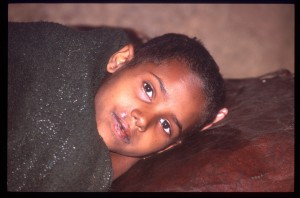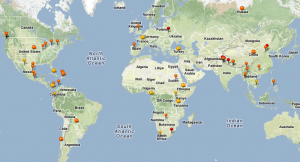
Diseases like malaria strike children harder than adults, but clinical trials for these diseases rarely include or focus on children. Why? (WHO/P. Virot)
We’re pretty focused on the safety of the things around us. Our drinking water gets checked for chemicals, bacteria and other things that could make us sick. Kids’ car seats are tested to make sure they’ll keep children safe in an accident.
But there’s one surprising arena where this focus on safety and testing often falls short: the medications we give our children. Not just in the United States, but globally.
There are lots of reasons why fewer drugs get tested for safety and efficacy in children than in adults. It’s time-consuming, expensive and, frankly, risky. The ethics of testing new medications in children are pretty thorny.
And, overall, the market for pediatric drugs is much, much smaller than that for drugs for adults, since children fortunately don’t get sick as often as us grown-ups.
But for some diseases like asthma and diarrheal diseases, children bear a greater burden than adults—one that’s not matched by the amount of research done on drugs for kids.
“Children are severely underrepresented in clinical research, despite several national and global efforts aimed at addressing their medical needs,” says Kenneth Mandl, MD, MPH, director of the Intelligent Health Laboratory in Boston Children’s Hospital’s Informatics Program and a physician in the hospital’s Division of Emergency Medicine. “Without proper information on pediatric safety and efficacy, doctors are often left with little choice but to extrapolate from adult studies when prescribing medications for children.”
To get a sense of the size of the gap between pediatric disease burden and clinical research, Mandl and Florence Bourgeois, MD, MPH (also in Emergency Medicine) recently compared the 10 conditions with the greatest global impact (as measured by the World Health Organization, or WHO) and clinical drug trials for those conditions registered between 2006 and 2011 in ClinicalTrials.gov, a database of federally and privately supported clinical trials conducted in the United States and around the world.

Recent HealthMap reports for just three of the 10 conditions Mandl and Bourgeois studied. (HealthMap)
As they recently reported in Pediatrics, Mandl and Bourgeois found some pretty substantial discrepancies. Overall, children bore 60 percent of the global disease burden for the 10 conditions on the WHO’s list—a list that included asthma, depression, malaria, migraine and HIV/AIDS—but only about 12 percent of the drug trials conducted for those conditions over the five-year study period included or focused on children.
As Bourgeois points out, the study’s results quite likely underestimate the scope of the problem. “Our study focused on the 10 conditions with the highest prevalence in the WHO data, but the discrepancy may actually be higher for those that are more rare,” she explains. “This could just be the tip of the iceberg.”
So what’s causing the gap? At least some of it might have to do with money. Mandl and Bourgeois noted that more than 65 percent of the adult-focused clinical trials they looked at received pharmaceutical industry funding. On the flip side, less than 42 percent of the pediatric trials they examined received industry funding; government or non-profit sources supported the rest.
Mandl was unequivocal about what needs to be done to close the gap: “We believe industry should play a larger role in supporting and conducting clinical trials for pediatric populations, and take steps to ensure that children’s needs are reflected in the clinical research enterprise.”
What do you think, readers? What could be contributing to the gap between the impact of illnesses on children and the amount of child-focused research done on those diseases? And do you agree that industry should put more money into drug research for children? Tell us in the comments or on Facebook or Twitter.






